Info
Subfamily: Panicoideae
Genus etymology: Cyrtococcum = "bent grain" [Greek] refering to the asymetric spikelets
Species etymology: patens = "spreading" [Latin] refering to the inflorescence branches
Photosynthetic type: C3 (cool season)
Nativity: naturalized - accidental
First recorded in Hawaiʻi: 2019
Map
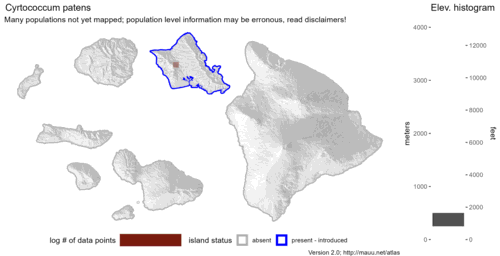
Inflorescence
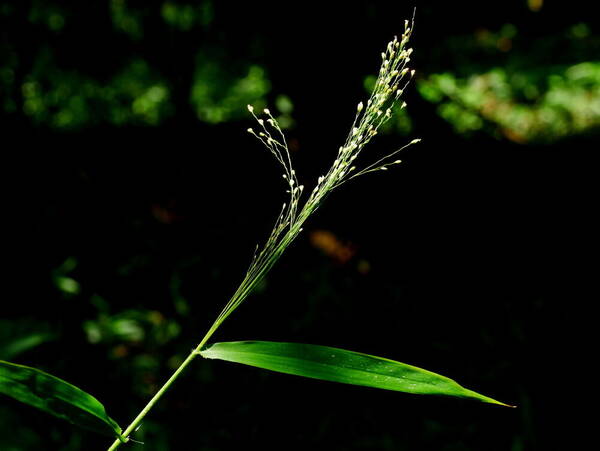 image credit: Jacy_Chen
image credit: Jacy_Chen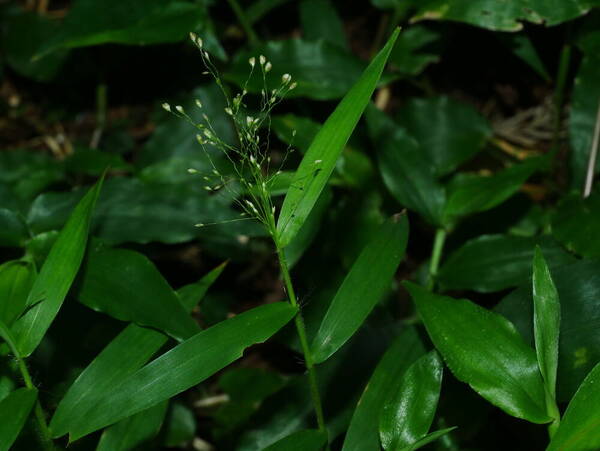 image credit: Jacy_Chen
image credit: Jacy_Chen image credit: Jacy_Chen
image credit: Jacy_ChenPlant
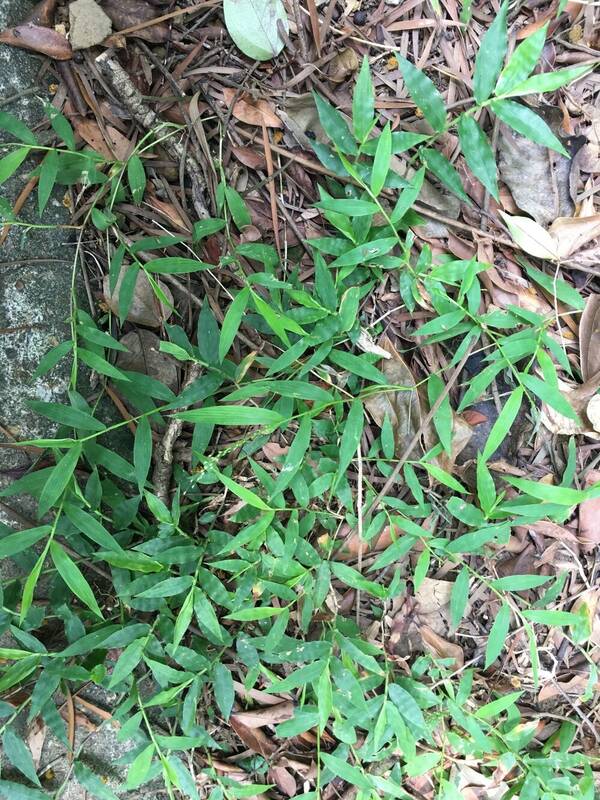 image credit: 何小花
image credit: 何小花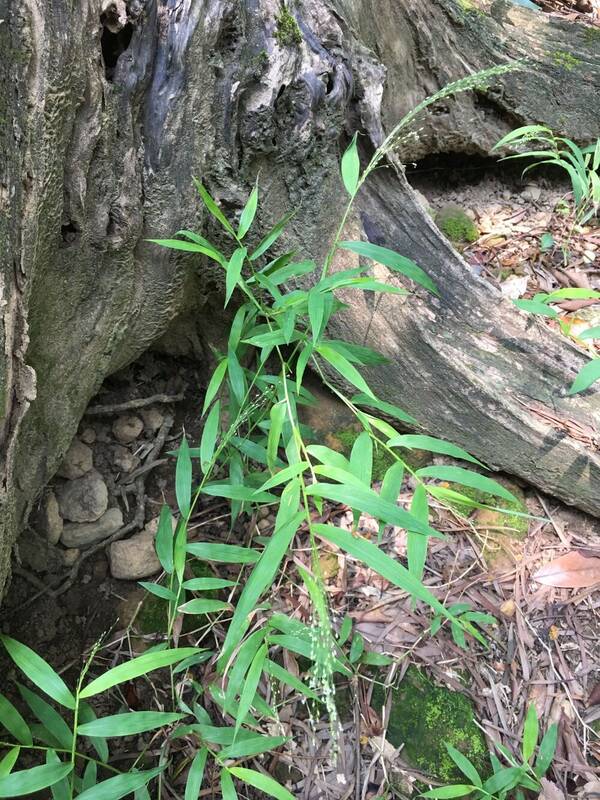 image credit: 何小花
image credit: 何小花Description
Culms creeping, smooth and glabrous, 15–60 cm tall. Leaf sheaths loosely pilose with tubercle-based hairs; leaf blades lanceolate, 3–15 × 0.3–2 cm, pubescent on both surfaces or subglabrous, basal margins with a few long, stiff, tubercle-based hairs, apex acuminate; ligule 0.5–2 mm, subrounded. Panicle 5–30(–40) cm, often diffuse, branches loosely ascending to widely spreading, very slender, glabrous; pedicels filiform, longer than spikelets. Spikelets purplish at maturity, 1.3–1.8 mm, varying from glabrous to appressed pubescent or shortly hispid with stiff, conspicuously tubercle-based hairs; glumes 3- veined, the lower ca. 1/2 spikelet length, the upper 2/3 spikelet length; lower lemma subequaling spikelet, margins ciliate, apex obtuse; upper lemma minutely pitted. Anthers ca. 0.8 mm. Fl. and fr. Sep–Feb. 2n = 18, 36.
(Description source: Wu, Z.Y., Raven, P.H. & Hong, D.Y. (eds.). 2006. Flora of China. Volume 22. Poaceae. Missouri Botanical Garden Press, St. Louis. 733 pp. )
Habit Perennial; mat forming. Culms decumbent, or prostrate, or rambling; 10-100 cm long; rooting from lower nodes. Culm-nodes glabrous. Leaf-sheaths glabrous on surface, or pilose, or hirsute; outer margin hairy. Ligule an eciliate membrane; 0.5-0.7 mm long; acute. Leaf-blade base asymmetrical. Leaf-blades linear, or lanceolate, or elliptic, or ovate; 1-10 cm long; 3-18 mm wide. Leaf-blade surface glabrous, or hirsute. Leaf-blade margins scaberulous; ciliate; hairy at base. Leaf-blade apex acuminate. Inflorescences Inflorescence a panicle. Panicle open; obovate; 3-25 cm long. Primary panicle branches spreading. Spikelets solitary. Fertile spikelets pedicelled. Pedicels filiform. Spikelets Spikelets comprising 1 basal sterile florets; 1 fertile florets; without rhachilla extension. Spikelets obovate; laterally compressed; compressed strongly; gibbous; 1.3-2 mm long; falling entire. Fertile Spikelets comprising 1 basal sterile florets; 1 fertile florets; without rhachilla extension. Spikelets obovate; laterally compressed; compressed strongly; gibbous; 1.3-2 mm long; falling entire. Glume Glumes similar; shorter than spikelet; thinner than fertile lemma. Lower glume ovate; 0.75-1.5 mm long; 0.5-0.75 length of spikelet; membranous; without keels; 3-5 -veined. Lower glume apex acute. Upper glume oblong; gibbous; 1-1.75 mm long; 0.75-1 length of spikelet; membranous; without keels; 3-5 -veined. Upper glume surface pubescent, or hispidulous. Upper glume apex acute. Florets Basal sterile florets barren; without significant palea. Lemma of lower sterile floret similar to upper glume; oblong; 1.1-2 mm long; 1 length of spikelet; membranous; 5 -veined; pubescent; obtuse, or acute. Fertile lemma obovate; laterally compressed; gibbous; 1.25-2 mm long; indurate; without keel; 5-7 -veined. Lemma lateral veins obscure. Lemma margins involute. Lemma apex with a little green crest. Palea reflexed at apex; involute; indurate; 2 -veined. Flowers Anthers 3; 0.5-1 mm long. Fruits Caryopsis with adherent pericarp. Distribution Asia-temperate: China and eastern Asia. Asia-tropical: India, Indo-China, Malesia, and Papuasia. Australasia: Australia. Pacific: southwestern and northwestern.
(Description source: Clayton, W.D., Vorontsova, M.S., Harman, K.T. and Williamson, H. (2006 onwards). GrassBase - The Online World Grass Flora. Available at https://powo.science.kew.org )